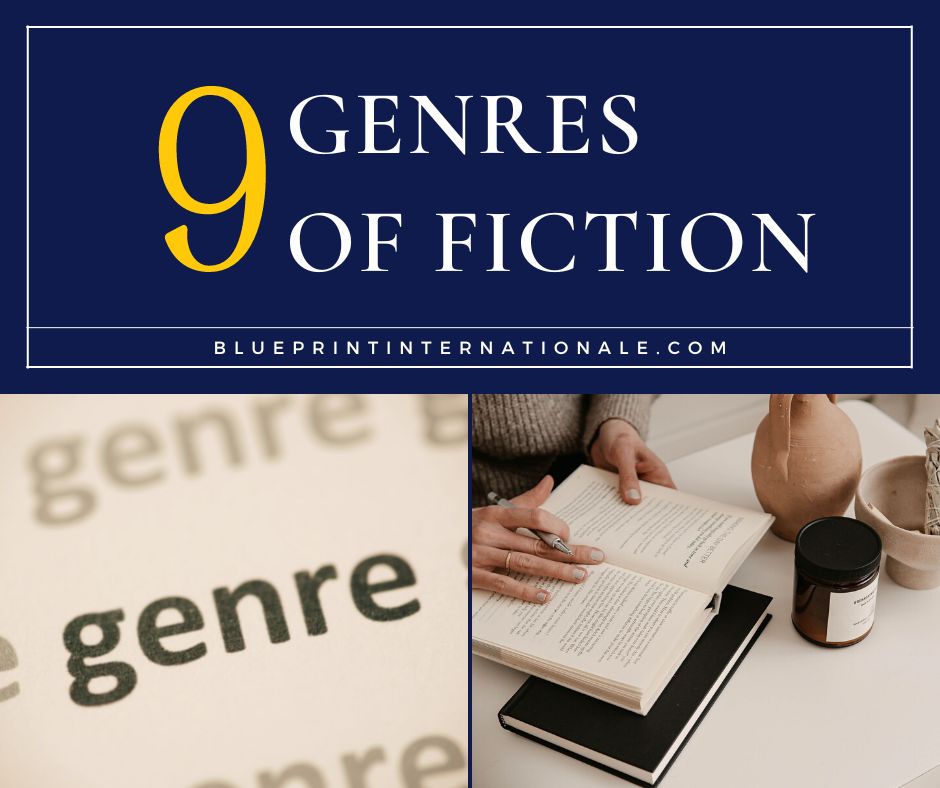In response to the question, “What are the different types of literature?” The two primary categories that come to mind for many readers are fiction and nonfiction. It’s not entirely false, but it’s also not quite true.
Numerous literary subgenres exist, and they’re all fantastic and unique in their ways. Although this may be true, not every author can be considered a master of all subgenres because they typically specialize in one. This article will provide a brief overview of the many different types of fiction that can be found.
1. Drama
Dramatic tales are typically performed on stage and may be written in verse or prose. Conflicts and emotions are expressed through speech and deeds.
A play in literature is the performance of written dialogue that depicts actual or imagined events. Dramas can be broadcast on the radio, on film, or stage. Plays are the common name for theaters, and playwrights or dramatists are the people who write them.
2. Fable
A story that shows an important truth, especially in which animals talk like people; a legendary, supernatural tale.
A parable differs from a fable in that it includes animal actors to mimic human characteristics, such as speech or other abilities, such as plants, inanimate objects, or forces of nature. On the other hand, talking animals are a specific feature of animal stories.
Humans give animals or inanimate objects human minds and speech to highlight morals. Fables are frequently found in both children’s books and folklore.
3. Fairy Tale
A fairytale is a specific magical tale that typically has its roots in folklore. In European fairy tales, the protagonist is generally a poor, courageous, and resourceful person who embarks on dangerous adventures and becomes wealthy.
A fairy tale is a narrative, frequently created for young audiences, that includes fantastical creatures like elves, goblins, wizards, and sometimes even fairies. Rather than referring to the presence of a fairy character within a story, the term “fairy tale” seems to refer more to the fantastic and magical setting or magical influences within a story. Before they were written in books, traditional fairy tales were often told from one person to the next.
Readers are urged to suspend disbelief in fantasy fiction with unusual or fantastical settings or characters.
The literary genre of fantasy includes magical and supernatural elements that don’t exist in reality. Although some authors combine fantasy elements with real-world settings, many invent new universes with their physical laws, logical systems, and fantastic races and creature populations. Fantasy is speculative and unrelated to either reality or scientific fact.
4. Folklore
Folklore artifacts are frequently categorized as belonging to one of three categories: material, verbal, or customary lore. It is due to the collection and interpretation of children’s folklore and games in school yards and neighborhood streets.
These genres and subtypes are designed to assist in classifying and organizing folklore artifacts. Folklorists can talk to each other and share information because the labels are always the same.
5. Historical Fiction
A literary genre known as historical fiction has a fictional plot based on historical events. It can be used to talk about a wide range of stories, such as those in the theater, opera, movies, TV shows, video games, and graphic novels.
The setting in the past and attention to manners, social conditions, and other details of the period being depicted are essential components of historical fiction. Authors frequently explore them in these settings to help readers understand how famous historical figures may have reacted to their environments. Typically, a historical romance aims to romanticize bygone eras. Some subgenres, like alternate history and historical fantasy, add parts that aren’t true to history or are entirely made up.
Because of reader criticism or genre expectations for accurate period details, historical fiction works are occasionally criticized for lacking authenticity. Readers and famous critics often highlight the conflict between historical accuracy and fiction. Still, scholarly criticism often goes beyond this and looks at the genre’s other thematic and critical interests.
6. Horror
In this work of fiction, the reader and the characters experience terrifying events.
The goal of the fiction genre known as “horror” is to frighten, horrify, or disgust the reader. The speculative fiction subgenres of psychological and supernatural horror are frequently used to categorize horror.
A horror story is a piece of fiction that shocks or even frightens the reader or perhaps induces a feeling of repulsion or loathing. The purpose of “horror” is to scare and frighten the reader. In horror stories, the main threat is often used as a metaphor for society’s deeper fears.
A national or folk hero has a basis in reality but also contains fantastical elements.
Legends are narratives or collections of narratives about individuals or groups of individuals that have been passed down through history.
While mythological creatures or other elements may be present in some legends, most stories about people or places are told as facts. Even though legends are supposedly at least loosely based on actual events, they frequently change over time to remain exciting and current. Local lore frequently travels and transforms depending on where it is told.
7. Mystery
Fiction centers on cracking a case or revealing a secret.
The details of an incident—typically a murder or other crime—remain a mystery until the end of the narrative. Each suspect in a small group of suspects is frequently given a plausible excuse for committing the crime and a fair chance to do so. Most often, the main character is a detective, a la Sherlock Holmes, who deduces the truth from the information provided to the reader and solves the mystery.
There are some nonfiction mysteries. The focus of mystery fiction can be on the puzzle or suspense element and its logical resolution, as in a whodunit or other detective story. On the other hand, hardboiled detective stories are more realistic and action-oriented.
Mystery fiction can feature a supernatural mystery with no requirement for a logical resolution or even one without a crime. This usage was widespread in pulp magazines of the 1930s and 1940s, offering what was then referred to as difficult-to-solve and bizarre stories. The same-named similar titles that contained traditional hardboiled crime fiction stood in contrast to that. The Dime Mystery, which began as a typical crime fiction magazine but changed to “weird menace” in the latter part of 1933, was the first to use the word “mystery” in that sense.
8. Myth
Through its symbols, which are frequently about what the gods do, the legend or classic story, commonly based on historical events, demonstrates how people behave and how nature functions.
The genre of writing known as “mythic fiction” is characterized by the use of tropes, themes, and symbols that have some connection to myth, legend, folklore, and fairy tales. Terri Windling and Charles de Lint are generally credited with coining the phrase. Urban fantasy and mythic fiction overlap, and the terms are occasionally used interchangeably. Still, fantastical fiction also includes modern works set in non-urban environments. Contemporary literary and fantasy fiction that blurs the lines between the two is called “mythic fiction.”
Even though mythic fiction can be loosely based on mythology, it frequently uses well-known mythological figures and archetypes.
Fictional Science
9. Science fiction
Science fiction, also called Sci-Fi or SF, is a type of speculative fiction that often looks at imaginative and futuristic ideas like advanced technology, space travel, time travel, parallel universes, extraterrestrial life, sentient AI, cybernetics, some types of immortality, and the singularity.
Science fiction has roots in ancient mythology and shares many subgenres with fantasy, horror, and superhero fiction. Authors, critics, scholars, and readers have long disagreed on its exact definition.
Across a large portion of the globe, science fiction has gained popularity and influence in literature, film, television, and other forms of media. It often examines how scientific, social, and technological changes might affect people. It has been called the “literature of ideas.”
These categories of fictional writing have been popular among authors for many decades. Indeed, it is fascinating to think about how brilliant authors can use their imaginations to create stories for their readers. This is the sign you have been looking for if you are an aspiring writer and want to write your own fictional story. If so, this is the sign you have been looking for.
We have faith that whatever you write will be a masterpiece if you just write what’s in your imagination.




